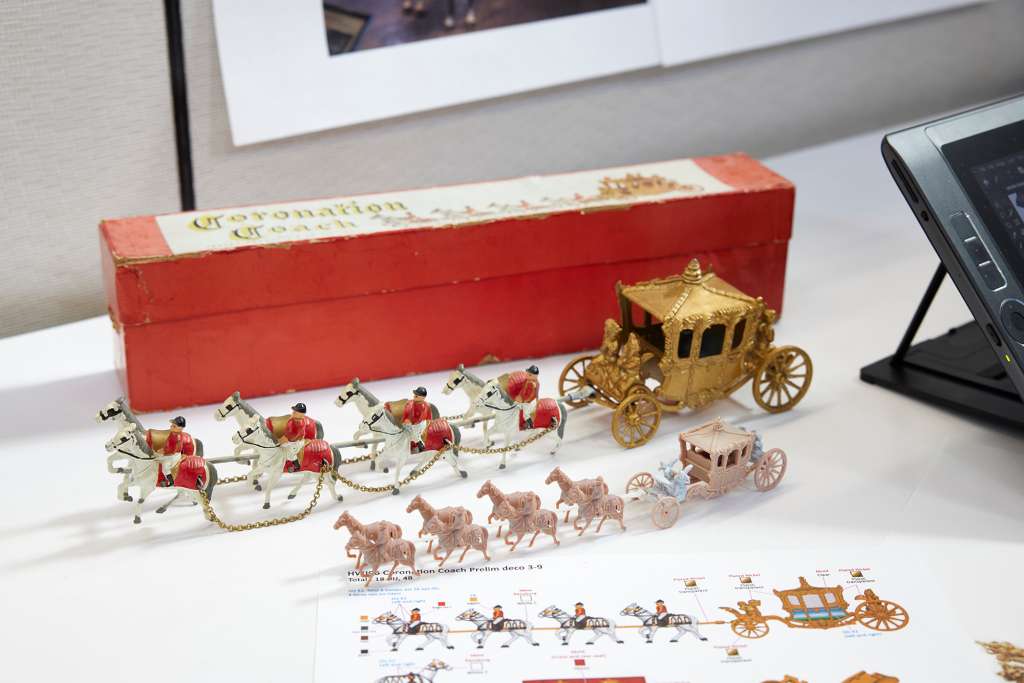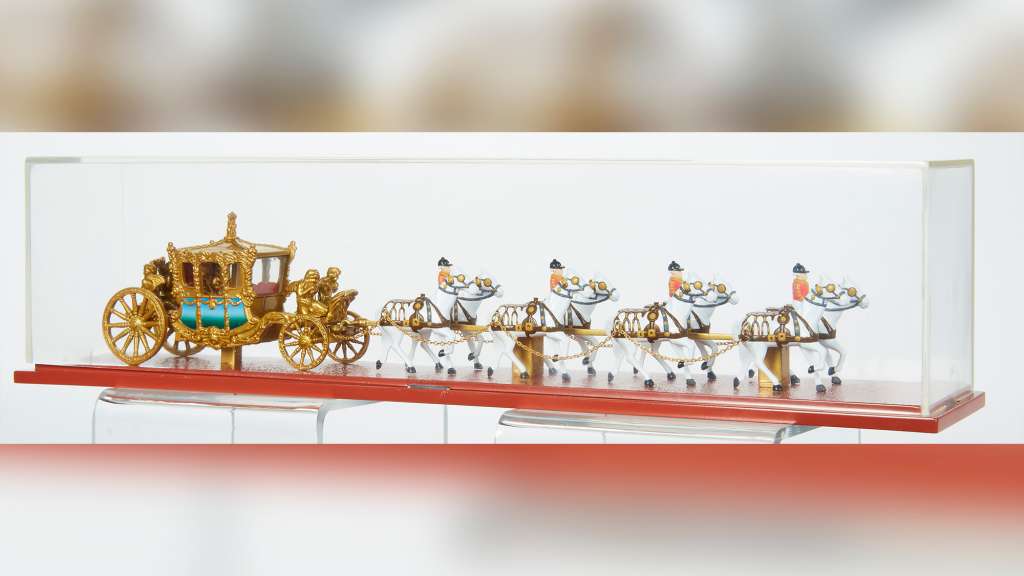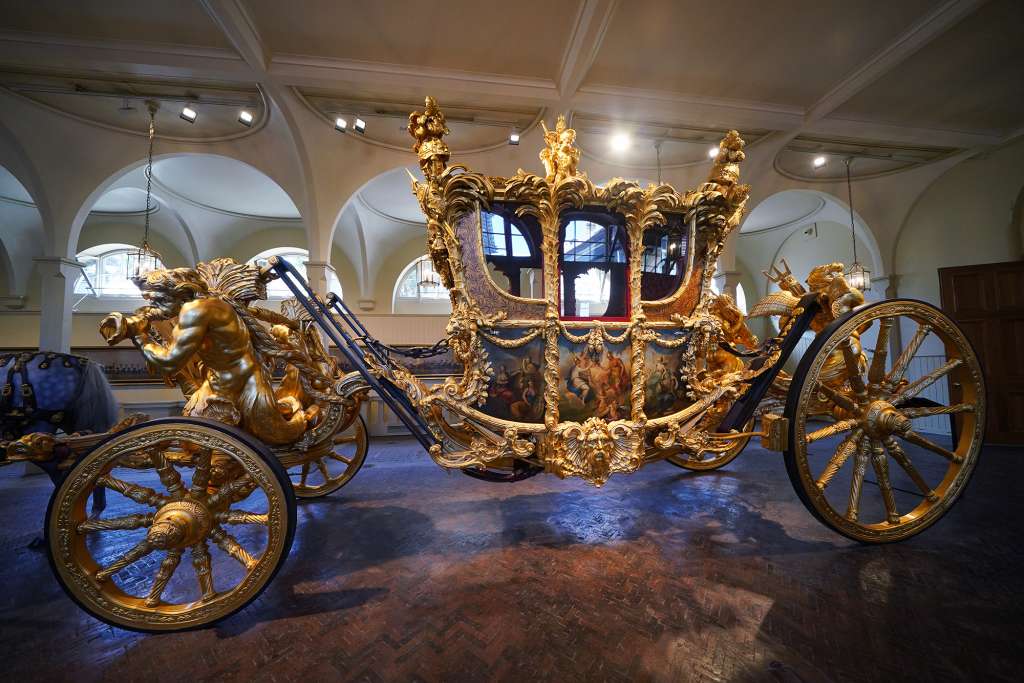(CNN) — Matchbox, maker of tiny toy cars, is bringing back one if its most important models. It’s not a car, but a little horse-drawn coach, and its success led to the creation of Matchbox toy cars. And it was Matchbox cars that, in turn, inspired their one-time competitor, Hot Wheels.
Both brands are now owned by Mattel, but it all goes back to an ornate little horse-drawn carriage that was sold as a keepsake for the coronation of Queen Elizabeth II. As Matchbox celebrates its 70th anniversary, it’s bringing out a new, more detailed and accurate version for the coronation of her son, King Charles III.
In 1952, the year Elizabeth’s father, King George VI, died, two men had a shop making metal toys including miniature road-building equipment and trucks in a town northeast of London. They hadn’t had much success and the business was struggling as it dealt with restrictions on metal use during the Korean War.
The king’s passing, the end of the war and the coming coronation of a new monarch created a perfect opportunity for the small firm, called Lesney Products & Company Limited. Lesney would soon become famous as the makers of Matchbox cars. But, first, the company’s two owners at the time, Jack Odell and Leslie Smith, brushed off a toy design they had never put into production.

It was a model of the ornate gilded Gold State Coach. The royal carriage, built in 1762, had been used in the crowning of every monarch since King George IV in 1821. The original idea had been to make the toy with a miniature King George VI inside but, since the king had died, they cut him out of the metal molds. (His lower legs remained and are visible in the early toys.)
The Lesney model had eight painted metal horses and four riders leading a coach that was either painted or plated in gold or silver, according to the book Matchbox Toys by Nick Jones. That toy was a big hit, so Lesney produced a smaller version, just a few inches long.
The teeny coach was an even bigger hit, and the company sold over a million of them.
A new coach
To make the new version, Matchbox didn’t simply go back and copy the toy from 70 years ago. Instead, Julian Payne, lead designer at Matchbox, went to the Royal Mews, where regal carriages are kept, to extensively photograph the actual carriage. Those photos were then used to create the new model. They enabled designers to create a more accurate version that even corrects a few errors in the original.
“We’re doing as much [decoration], as much detail, as we possibly can,” said Payne.
The new coach will be constructed like modern Matchbox cars, in die-cast metal with clear plastic windows and plastic seat cushions inside. The original just had open windows. (Another version of the coach, made in the 1990s, had black windows.) The new coach’s shape also more closely resembles the real coach, which has a body that rides further back from its front wheels than in the original toy.
Painted side panels are recreated using printed designs. Three cherubs representing England, Scotland and Ireland are visible on the roof. in the original they were represented by a simple ribbed post. Sculptural figures including tritons, mythical sea gods, are rendered in more detail on the front and back.

The horses from the original toys were copied for this version using detailed 3D scans. The new carriage will be in the traditional 1/64 scale used for Matchbox cars. It will have rolling wheels and a front axle that turns, like the real coach. Tiny figures of King Charles and Queen Camilla sit inside, visible through the windows.
The new coaches can be ordered online starting the evening of April 25 through May 22 at $60 each. They will be produced only in the number that are ordered, according to Mattel.
Seventy years ago, those original toy carriages brought in plenty of cash, so Lesney embarked on the next idea. Around then, Odell’s daughter wanted a toy small enough that she could take to school but, according to Payne, the school had a rule that only toys small enough to fit inside a matchbox could be brought in. With the company’s new-found capabilities in producing very small toys, the Matchbox line of toy cars and trucks was born.
One of the most important features of these tiny vehicles was the price. They were cheap enough for kids to buy readily and play with, not a major investment.
“You could roll them around,” said Payne. “They weren’t pieces that you had to put on display behind a cabinet.”
Decades later, Elliot Handler, one of the founders of Mattel, noticed his son playing with Matchbox cars. Mattel had been looking for a toy that would appeal to boys the way Barbie, that company’s first big hit, attracted girls. Rather than just realistically reproducing actual production cars the way Matchbox did, Hot Wheels took inspiration from the custom car culture of southern California where Mattel was based. Hot Wheels cars had flashy paint jobs, outsized wheels, impossibly huge (relatively speaking) plastic engines, and only occasionally looked like cars you might actually see on the street. Hot Wheels also offered its famed orange plastic tracks for the cars to barrel down in miniature races.
After the Matchbox brand passed through a few owners it, too, ended up as part of Mattel, in 1997. The erstwhile competitors are now owned by the same corporation, and Matchbox has returned, more or less, to its roots concentrating on more lifelike cars and trucks, while Hot Wheels offers mostly the flashier custom jobs.
(Copyright (c) 2024 CNN. All Rights Reserved. This material may not be published, broadcast, rewritten, or redistributed.)

